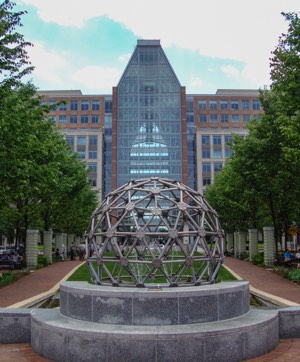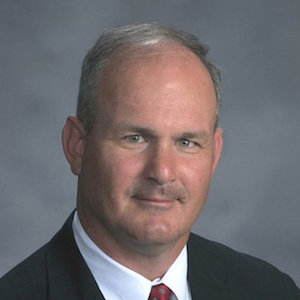 On November 15-17th I attended the 3-day program at the Patent Office in Alexandria Virginia. Unfortunately, at this time, no CLE credit was available for the program but USPTO has submitted it for CLE approval with the State of Virginia. This was the second time the program was offered for newer practitioners with additional programs scheduled at the USPTO regional offices across the country this upcoming year. The program is a condensed version of the 4-month classroom training given to new patent examiners. The presentations were all interactive allowing for attendees to ask numerous questions. Generally enough time was allowed to get through all of the materials in each section. At the beginning and end of each day, an additional half hour was provided for questions, but the afternoon sessions ran over the designated question and answer period.
On November 15-17th I attended the 3-day program at the Patent Office in Alexandria Virginia. Unfortunately, at this time, no CLE credit was available for the program but USPTO has submitted it for CLE approval with the State of Virginia. This was the second time the program was offered for newer practitioners with additional programs scheduled at the USPTO regional offices across the country this upcoming year. The program is a condensed version of the 4-month classroom training given to new patent examiners. The presentations were all interactive allowing for attendees to ask numerous questions. Generally enough time was allowed to get through all of the materials in each section. At the beginning and end of each day, an additional half hour was provided for questions, but the afternoon sessions ran over the designated question and answer period.
An overview on how much time examiners are given to complete an application was provided with a break down of time units allocated to various activities of the application review and processing. This was useful to understand what makes an examiners life easier and what makes it harder during prosecution. This provides the practitioner with the prospective on how to most effectively use prosecution based on a client’s objectives. Examiner bonus pay is achieved when an examiner is able to complete all the allocated time units by greater than 10% than what is allowed. Therefore, one should be mindful how the examiner is viewing a particular application and some suggestions were given to hasten prosecution. One example included providing an examiner with a detailed agenda in an interview request so the examiner can spend less time reviewing the application allowing for a shorter and more focused interview thereby not detracting from the time units allotted to summarize the interview. Another suggestion was, to the extent possible, provide shorter specifications by not describing all the known prior art permitting the examiner to focus on what is novel. Similarly, in response to an office action do not recite the examiners objections and rejections before each response. While practitioners may have reasons for not taking these actions, in the view of the examiners, these things only slows prosecution.
Hands on exercises were part of the program. In reading and understanding a patent application, materials were provided how examiners learn to break down an application in order to prepare to conduct a search. Work sheets and a sample problem of a mechanical device (a tortilla making machine) application with prior art references were provided to the attendees so they could do a disclosure analysis, determine any §112(f) issues, create a claim diagram, create a claim tree and ascertain if there are any other §§112 and/or 101 grounds of rejection. Another exercise was claim mapping using the same sample problem and additional prior art using PTO forms to formulate allowances and rejections. After the exercises were completed, there was discussion of what was learned and how there are many different ways to reach a conclusion. For any practitioner, understanding the tools examiners use to reach their findings is very beneficial and will assist in drafting an effective application. While the exercises were very effective, there was not really adequate time to fully exploit the benefits. If the exercise materials were given ahead of time to read, it would have been even more enriching. In discussing this issue with the program director, Ned Landrum, it was explained USPTO could not distribute any of the materials prior to the program beginning as per a directive from its Counsel’s Office.
The lectures covered claim interpretation and how examiners apply the law under 35 U.S.C. §§112(a)(b) &(f), 101, 102 and 103. Most of the emphasis was on §§112(f), 102 and 103.
My impression is that examiners approach interpretation very literally based on the MPEP and the search results. Personally, I wish there was more time given to the discussion of §§102 & 103.
Discussion in great detail as to how examiners are taught to search and the various search engines available to examiners them was covered in depth. The internal search engines developed by the USPTO are impressive as to the scope of what can be searched and the ability to define a search by terms and words in a particular order. A good search leads to the most efficient and effective application processing according to the Patent Office and that is why the largest time unit allocation given to examiners is for doing the search. Examiners are trained to start a search by first looking for a common inventor, then a common assignee, then related patent family members, then IDS or specification background. A search is then defined by the problem to be solved with a search by classification and/or key words. Stephen Key, President of Patent Key a private searching company, did a presentation on the techniques and search engines utilized by his company. All of his searchers work primarily at the patent office on its publically available EAST search engine that is almost limitless with minimal mistakes. Mr. Key believes over his decades of experience that EAST is far superior to any other public or private search engine due to the built limitations and biases.
Writing an office action and responding to an applicant was a major module of the program. It covered how examiners are trained to create an office action with emphasis clarity and completeness, determining if an applicant’s reply is complete and responsive and how to respond to a reply. This presentation was done in the context of the sample tortilla making machine application used for the exercises. The examiner is trained to read a claim and any amendment in light of broadest reasonable interpretation. In order to avoid case law interpretations, examiners are trained to rely as much as possible on prior art in replying to an applicant’s response but the he or she will review and consider the cases cited. If an examiner does cite authority, he or she will usually refer to the MPEP or cases therein. Examiners will conduct a new search after each amendment is made and will do so even if a claim is rejected on the grounds of new matter.
Other topics covered included double patenting & restriction, Patent Trial and Appeal Board, correction of patents and the Central Re-Exam Unit including within it Reissue, Inter Partes Reexamination and Supplemental Exam.
The program from my perspective as a new practitioner was fabulous. The insight gleaned into the how the office operates in patent prosecution was highly beneficial and it dove tailed beautifully with a PLI course I had just completed entitled “Learn to Be a Successful Patent Practitioner”. At this point there exists a solid understanding of the entire patent prosecution process on my part. It is my hope the USPTO will continue to offer STEPP while refining it further and know that it will make a beneficial difference for practitioners and examiners alike.

![[IPWatchdog Logo]](https://ipwatchdog.com/wp-content/themes/IPWatchdog%20-%202023/assets/images/temp/logo-small@2x.png)

![[Advertisement]](https://ipwatchdog.com/wp-content/uploads/2024/04/Patent-Litigation-Masters-2024-sidebar-early-bird-ends-Apr-21-last-chance-700x500-1.jpg)

![[Advertisement]](https://ipwatchdog.com/wp-content/uploads/2021/12/WEBINAR-336-x-280-px.png)
![[Advertisement]](https://ipwatchdog.com/wp-content/uploads/2021/12/2021-Patent-Practice-on-Demand-recorded-Feb-2021-336-x-280.jpg)
![[Advertisement]](https://ipwatchdog.com/wp-content/uploads/2021/12/Ad-4-The-Invent-Patent-System™.png)







Join the Discussion
One comment so far.
Independent Inventor
December 1, 2016 11:44 amThank you for the interesting and helpful information Mr. Nowakowski.